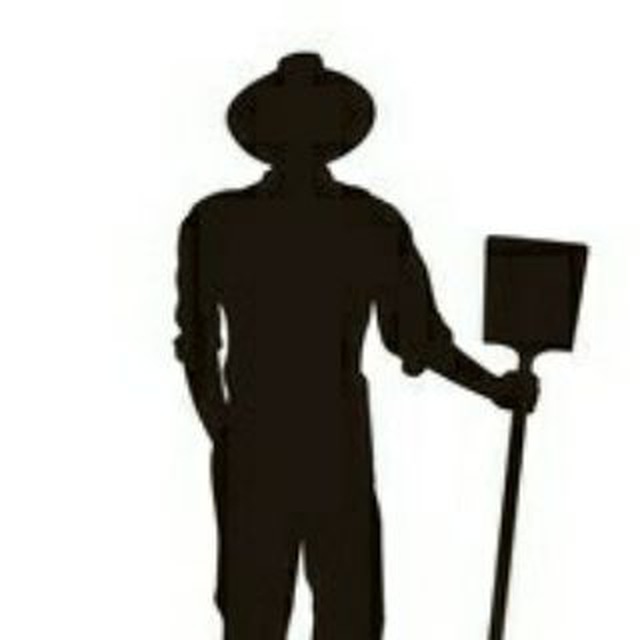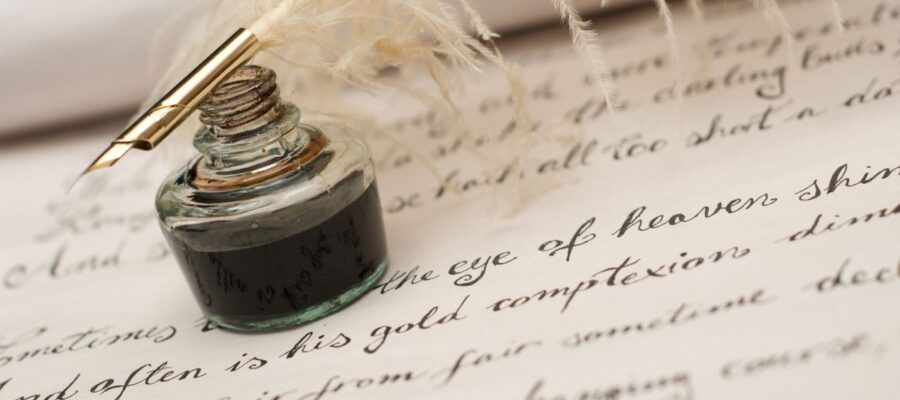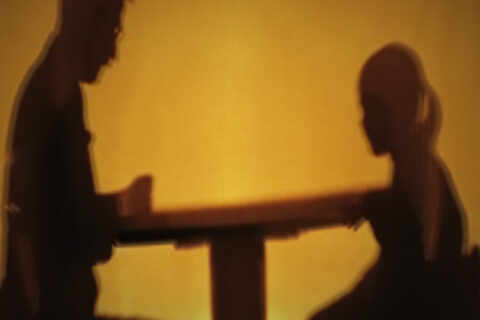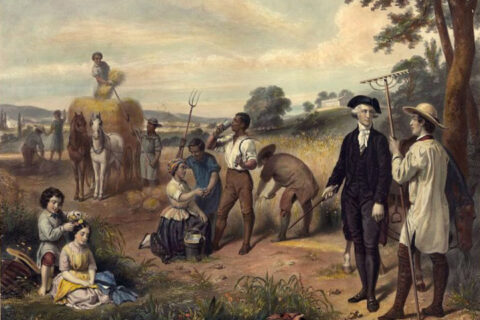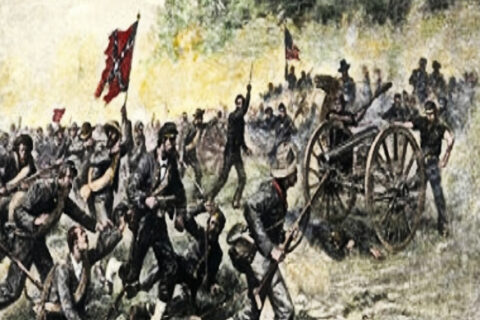Author’s Note: The item below is Chapter 17 of the book I originally wrote for my children and grandchildren titled, From Ordinary to Extraordinary – The Life and Times of Matthew Fontaine Maury, Pathfinder of the Seas. The allusion in the title to “Making Bricks” is in reference to the contents of a previous chapter. I recently pulled the chapter, dusted it off and re-wrote it. The editors have graciously agreed to publish the updated version here, for your enjoyment and edification. -T.M.
Making Bricks to the Time of The Song of the Shirt
The year was 1843. “Nannie Curly” turned six years-old in that memorable year. On this side of the Atlantic, her father’s scientific work continued apace. On the other side of that broad ocean, lived an English literary man named Thomas Hood. In that year, Mr. Hood submitted a new poem of his own writing for publication in the British weekly magazine called Punch. The new poem was published in that magazine’s 1843 Christmas Edition, under the curious title of The Song of the Shirt.
Inspired by the sad tale describing the struggles of a poor British seamstress known only to history as “Mrs. Biddell,” our poet immortalized this wretched woman and her plight in verse. The story has it that Mrs. Biddell did her sewing from her rented cottage located in the slums of London, plying her trade on fabrics supplied her by a manufacturer in that city to whom she sold her labor. The raw material being the property its owner secured to himself in the form of a deposit exacted from Mrs. Biddell’s meager earnings. Mrs. Biddell’s commission was to make trousers and shirts of this rented material in various sizes and styles, which items of clothing she would then deliver to her employer, who in turn would sell these garments for profit at retail prices.
Upon receipt of her handiwork, our employer would pay Mrs. Biddell a small stipend in exchange for her finished labor, providing her in turn with a new allotment of rented materials, secured, as it were, by the same amount of deposit. After the deposit was deducted, the payment for her labor alone was, it is said, not enough to provide her family with the necessities for their daily subsistence; and we can easily imagine that such was indeed the case. Labor conditions for the working poor were, at the time in that country, as well as in the American manufacturing states, harsh and of meager remuneration. Hence, the working poor of that era often lived in squalor and absolute poverty on both sides of the Atlantic; living conditions otherwise ignored or unnoticed by their more fortunate countrymen who read the likes of Punch.
As history has passed her story down to us, Mrs. Biddell was a young widow woman striving to support her family on her single and paltry sewing income. To this end, Mrs. Biddell’s skill, her industry and her labor combined, would prove unequal the daunting task fate had cruelly assigned to her. We are not informed as to the circumstances surrounding Mrs. Biddell’s widowhood; what we do know, or at least what we may safely glean from her story as told, is that Mrs. Biddell ultimately found herself in “dire straits,” behind on her rent and unable to provide for her family’s basic needs – needs such as food, clothing, shelter, medicine or medical care when needed. In short, Mrs. Biddell’s domestic situation, history informs us, had become desperate.
It is said that “desperate people do desperate things.” This seems to have been the impasse at which Mrs. Biddell had recently arrived when our poet took up her cause in telling her unpleasant story in verse. The story goes on to relate that at some critical point in her hopeless struggle to provide the bare necessities for her family, Mrs. Biddell made the desperate and fateful decision to circumvent the arrangement with her employer, and pawned the clothing she had made. This ill-conceived decision had the immediate and happy effect of supplying her family’s pecuniary needs temporarily, but it also had the longer term effect of indebtedness to her employer that Mrs. Biddell could not repay. To collect what was owed them, so the story goes, Mrs. Biddell was, at length, forcibly separated from her children and sent to be imprisoned in a workhouse, within which confines she would be required to work off the balance of her impossible debt, plying her trade night and day. Thus the impetus for Mr. Hood’s poem, the first stanza of which reads as follows:
With fingers weary and worn,
With eyelids heavy and red,
A woman sat in unwomanly rags,
Plying her needle and thread –
Stitch! Stitch! Stitch!
In poverty, hunger and dirt,
And still with a voice of dolorous pitch,
She sang ‘The Song of the Shirt.’
Since the time of the unfortunate stagecoach accident in the winter of 1839, Maury’s calligraphy had suffered notably from unsteadiness of hand. Not that his handwriting was thenceforth regularly illegible; it was not. But there was a noticeable and marked difference in his letters and other writings that did in fact tend toward a measure of illegibility. From the time of the accident onward, another notable change began to appear in his writing: Maury had first begun using abbreviations in his writing shortly following the accident, and more liberally still as time wore on. To this “shortcut” in his writing must be assigned the intention of making his correspondences less time consuming and laborious. We may safely assume, therefore, that Maury’s panacea for ennui as described in a previous chapter, had become something of an additional burden to him due to the unforeseen effects the stagecoach accident would have upon his penmanship.
Notwithstanding the ill effects on Maury’s formerly elegant handwriting, the accident had no such ill effects on his mind. Indeed, if that misfortune had any appreciable effect on the genius of Maury’s mind, it was a net positive and to the benefit of his fellow man. His daughter, Diana, later described the accident to have been revealed, at length, as a blessing in disguise. That is, as a hidden blessing that originally appeared, to all except perhaps Maury himself, in disguise of a curse. After all, the injury to his leg was so severe that it was thought by virtually all who knew him to practically put an end to his promising career in the Navy. Although the crippling injury to his leg made it impossible for Maury to seat himself comfortably and maintain good posture for writing, it is also to the date of the accident that one may trace the beginning of the full flowering of Maury’s mental capacities, through the instrument of his pen.
By 1855 Maury’s active and busy mind had long since greatly outpaced his ability to transfer the products of his thoughts and reflections to the medium of paper. To this cause future generations might well have been deprived the scientific insights of one of mankind’s greatest benefactors had Providence not another plan. Fortunately, and some would say Providentially, however, Commander Maury was surrounded by eager and capable scribes, as it were, always nearby with quill in hand, and paper and ink at the ready. During the work day at the Observatory, a young officer under his command wielded, in Maury’s stead, that instrument the English playwright famously declared to be “mightier than the sword;” but during the evenings with his family, other, more delicate hands were employed in this service.
In that year, Nannie Curly (Diana) had grown to become a young woman of 17 years. As most Southern girls were at the time, our Diana was afforded, in the words of Mr. Webster, “all that series of instruction and discipline which is intended to enlighten the understanding, correct the temper, form the manners and habits of [a young lady], and to fit [her] for usefulness in [her] future stations.”
As a younger man and during his children’s formative years, the then Lieutenant Maury had expressed, to friends and loved ones, his secret disdain for the mere thought that his daughters should ever be married. Nevertheless, it was a point in the Maury home that his children be given a proper education with the express intention of fitting them for usefulness in their (probable) future stations. After all, children are little people, and little people invariably grow up to become adults and to do adult things. No matter how much their father hated the thought that one day his little girls, each in her own turn, would in fact grow to womanhood and be married, Maury was not an impractical man working under the delusion they would remain unmarried and childless spinsters all of their lives. As such, Nannie Curly, like each of her sisters, was trained in the art of being and of conducting herself as a lady and a homemaker, first and foremost. In spite of his youthful disdain for the thought, it was nevertheless assumed that all of the Maury girls would one day be married and have their own families. To the end of preparing his girls to be useful in their future vocations as wife, homemaker and mother, Maury turned over that important aspect of their education to her who was most suited to it. That is to say to his wife, their mother. And she, in turn, delegated portions of their domestic training out to willing ladies she knew to be better qualified the task.
As with her sisters, Nannie Curly was trained by an aunt in the art of sewing stitches. Certainly a skill any Southern young lady living in the 19th Century should acquire and hone to the highest level of perfection she could attain. Ever the attentive student eager to learn a new skill, young Nannie Curly mastered the art early and relatively easily. She would later come to find her skill in “stitching” rather tedious and boring and ungratifying for a girl such as she. Gifted with a measure of her father’s intelligence and love of scientific learning, young Nannie always showed a keen interest in her father’s work, as well as a capacity for understanding its intricacies unusual for her sex. By the time she was 12 or 13 years-old, the young maiden had also successfully mastered the art of penmanship, and developed a proficient and elegant hand; a skill-set she enjoyed practicing much more than that of sewing stitches.
“How comes it that my letters are always written at night,” her father would relate to his cousin, Frank, “is as I shall explain.”
You see we are all assembled in the parlour after tea; I am walking up and down, and smoking to refresh myself after the labours of the day, and prepare for those at night. All hands are sitting around the centre table at their various occupations, and somehow or other the inkstand, the porcupine pens, and a sheet of paper are always right by Nannie Curly, and she had just as well be writing words for me as be sewing stitches in moral pocket handkerchiefs. It’s finger and thumb anyway; and you know, I think there is too much of that among the women-kind, and so I might as well fill up an odd end of time, and better too. Nannie Curly is tired, and so are you. My head has got well, so I’ll to work, and she to finger and thumb, keeping time to “The Song of the Shirt.”[*]
As with all of his letters at that date and afterward, the foregoing is signed M.F.M. (Matthew Fontaine Maury), but is written in the elegant hand of his then thirteen year-old daughter, Nannie Curly, next to whom at centre table, on this occasion, as always, somehow found the quill, the inkstand, and the paper on which that little piece of history is recorded. And all while keeping time to The Song of the Shirt.
With fingers weary and worn,
In hopeful expectation,
A lass at table awaits relief,
from nightly sewing oblation.
Stitch! Stitch! Stitch!
In pigtails, corset and skirt,
And still with posture straight and erect she wrote,
Keeping time to The Song of the Shirt.
[*] Letter copied from A Life of Matthew Fontaine Maury, by Diana Fontaine Corbin
